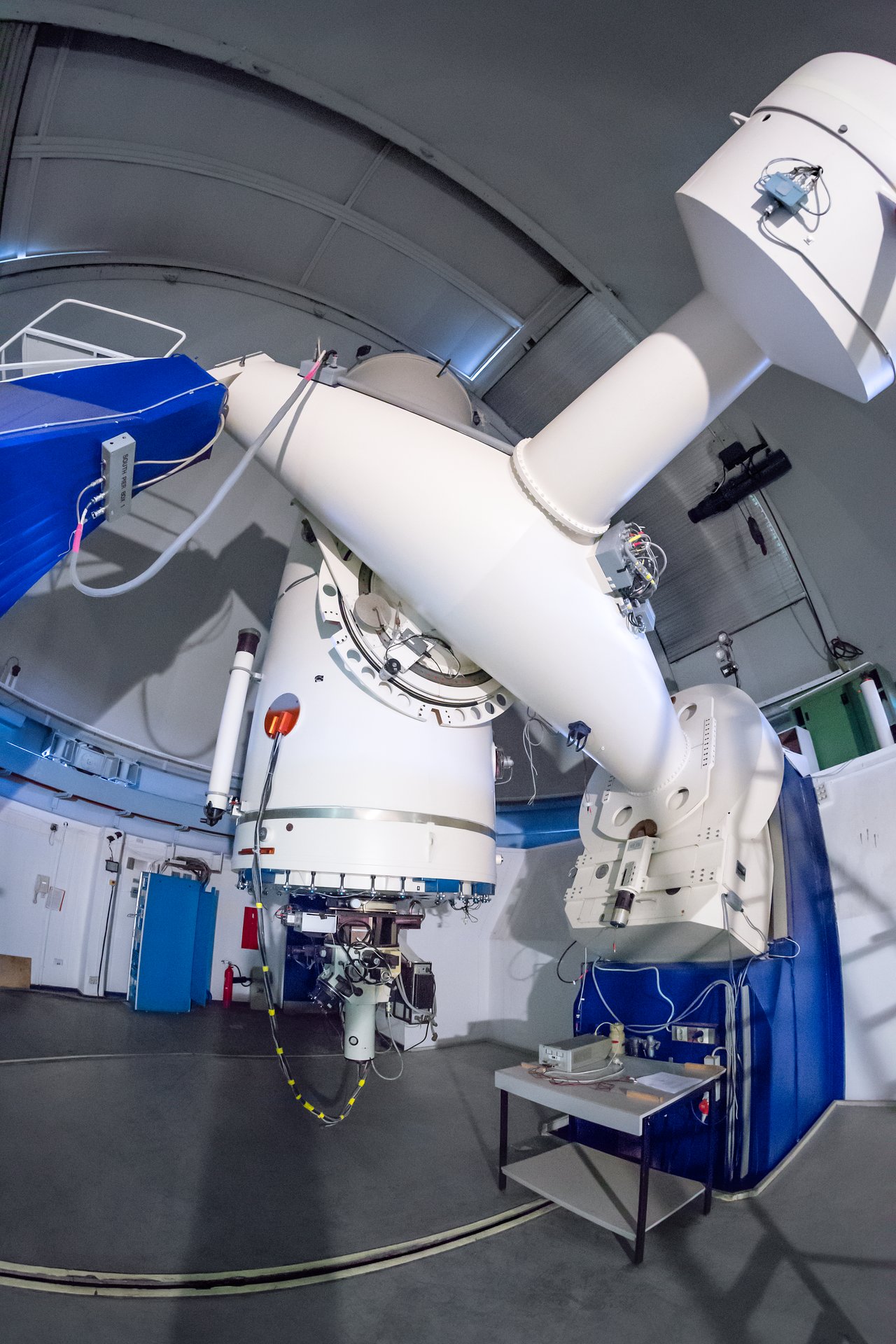Boller and Chivens Spectrograph
Manufactured by the American company Boller and Chivens, The Boller and Chivens Spectrograph (B&C Spectrograph) was installed on the ESO 1.52-metre telescope in 1973 and served for almost 30 years with great results. Both the ESO 3.6-metre telescope and the MPG/ESO 2.2-metre telescope had a Boller and Chivens Spectrograph with practically the same design.
This instrument, designed to perform stellar spectroscopy, is what the experts called a classical grating spectrograph because of how star light passes through it: the starlight beam collected by the telescope passes through the spectrograph entrance slit in the telescope focal plane to a collimator, in this case a parabolic mirror. After this, the reflected beam reaches the grating surface which splits and diffracts the light like a prism. Finally, the diffracted light passes through a camera which takes images of the spectrum using a CCD detector.
The Boller and Chivens Spectrograph installed on the ESO 1.52-metre telescope underwent many changes over the years thanks to new technology. One of the most important was the replacement of the detector. Originally, the B&C spectrograph had a photographic plate detector which was replaced with CCDs. Also, new cameras and scanners were incorporated into the system of the B&C Spectrograph.
Over the years, the Boller and Chivens Spectrograph has helped us to understand star and galaxy clusters, and took spectrums of fascinating objects like comets Hale-Bopp and Hyakutake.
The Boller and Chivens Spectrograph at the ESO 1.52-metre telescope was operated by ESO until 30 September 2002 and by Brazil until 31 December 2002.
Science highlights with the Boller and Chivens Spectrograph
B&C technical specificationsThe authoritative technical specifications as offered for astronomical observations are available from the Science Operations page.
|
